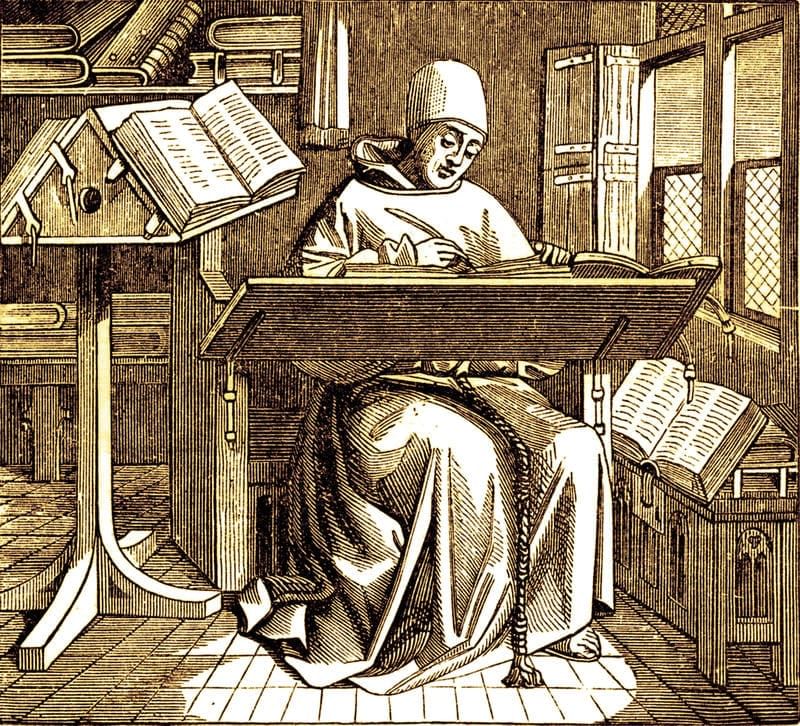Class 10 History Chapter 5 Question Answers - Print Culture and the Modern World (Deducted from CBSE 2021-22 examination)
Q1. Why was China a major producer of printed material for a long time?
Ans: China was a major producer of printed material due to several key factors:
- To support candidates, a large number of textbooks were printed, sponsored by the imperial state.
- From the 16th century onwards, the number of examination candidates increased, leading to a surge in printed materials.
- By the 17th century, as urban culture flourished, print became more diverse, reaching beyond scholar-officials to include merchants and leisure readers.
- New genres emerged, such as fiction, poetry, and autobiographies, attracting a wider audience, including women.
Q2. Who were the people who employed scribes to write in the 14th century?
Ans: In the 14th century, the following groups employed scribes to write:
- Wealthy individuals - The rich could afford the high costs of handwritten books.
- Aristocrats - Nobility often commissioned scribes for their literary needs.
- The Church - Religious institutions required scribes for manuscripts.
However, the production of manuscripts was slow and costly, leading to a shift towards woodblock printing, which made books more accessible.
 Medieval Scribe
Medieval Scribe
Q2. State the limitations of handwritten books. OR Why were Manuscripts not used widely in everyday life before the age of print in India?
Ans: Limitations of Handwritten Books
- Costly and time-consuming to produce.
- Copying manuscripts was expensive and required a lot of effort.
- Manuscripts were fragile and could easily be damaged.
- Their size and weight made them cumbersome to transport.
- Limited circulation meant they were often unaffordable for the middle class.
Q3. Write a short note on the developments or innovations in printing technology in the 19th century.
OR
Give three methods by which printed books became more accessible to people. OR Describe the development of the printing press after Gutenberg.
Ans: In the 19th century, several significant innovations in printing technology emerged:
- Richard M. Hoe from New York developed the power-driven cylindrical press, which could print 8,000 sheets per hour. This was particularly beneficial for newspaper printing.
- The late 19th century saw the introduction of the offset press, capable of printing up to six colours simultaneously.
- By the early 20th century, electrically-operated presses further increased printing speeds.
- Improvements included better paper feeding methods, enhanced plate quality, and the introduction of automatic paper reels and photoelectric controls for colour registration.
Q4. Write a short note on how the printing press came to India.
Ans: The printing press was introduced to India by Jesuit missionaries in the mid-sixteenth century. Key developments include:
- Jesuit priests arrived in Goa, where they learned Konkani and printed various tracts.
- By 1674, around 50 books were printed in Konkani and Kanarese languages.
- The first book in Tamil was published in 1579 at Cochin by Catholic priests.
- In 1713, the first book in Malayalam was printed.
- By 1710, Dutch Protestant missionaries had printed 72 Tamil books, mostly translations.
- By the end of the 18th century, newspapers began to emerge in various Indian languages.
Q5. What were the difficulties faced by manuscripts in India?
Ans: Manuscripts in India faced several difficulties, including:
- High Cost: Handwritten books were expensive to produce.
- Fragility: Manuscripts were delicate and required careful handling.
- Limited Accessibility: Their size and weight made them hard to carry and read.
- Complex Scripts: Varied writing styles complicated reading.
- Teaching Methods: Students often learned by writing down texts dictated from memory, rather than reading them.

Q6. Explain the terms Ulema and Fatwas.
Ans: Ulema: These are the scholars of Islam who specialise in Sharia, the body of Islamic law. They are learned individuals and are recognised as experts in religious matters.
Fatwa: This is a religious edict issued by a qualified authority, known as a Mufti. A fatwa clarifies specific points about Islam or provides guidance on how Muslims should act in particular situations.
Q7. Who were the dissenters? Why did they object to women being educated?
Ans: There were dissenters among both Hindus and Muslims regarding women's education:
- Many Hindus held the superstitious belief that educating women would lead to their widowhood.
- Muslims feared that women would be corrupted by reading Urdu romances.
Q8. What was the role of cartoons and caricatures in new forms of publications?
Ans: By the 1870s, cartoons and caricatures were common in journals and newspapers, addressing social and political issues. Their roles included:
- Critiquing the educated Indians' fascination with Western styles and customs.
- Expressing fears regarding social change.
- Mocking the behaviour of imperial rulers and their attitudes.
- Nationalists also used caricatures to criticise imperial rule.
This form of art sparked public debate and encouraged people to reflect on societal norms and the role of imperialism.
|
65 videos|517 docs|79 tests
|
FAQs on Class 10 History Chapter 5 Question Answers - Print Culture and the Modern World (Deducted from CBSE 2021-22 examination)
| 1. What is print culture and how did it emerge in the modern world? |  |
| 2. What impact did print culture have on society during the modern period? |  |
| 3. How did print culture influence political movements? |  |
| 4. In what ways did print culture contribute to the spread of nationalism? |  |
| 5. How has digital technology affected print culture in the modern world? |  |























